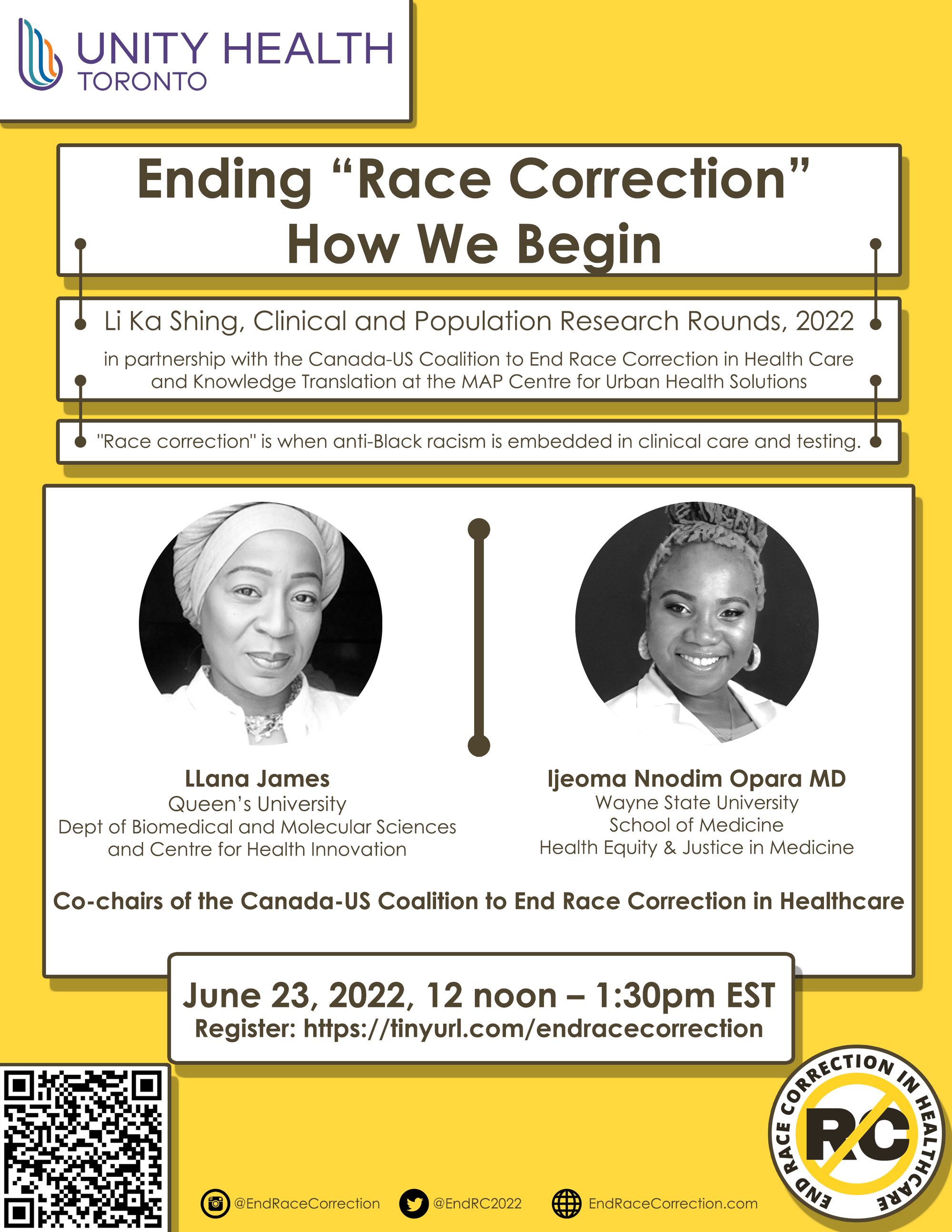Ending "Race Correction" How We Begin

Join the Li Ka Shing, Clinical and Population Research Rounds, 2022, June 23rd, 2022, 12 pm- 1:30 pm EST, Thursday.
Presented by Dr. Patricia O’Campo, Executive Director of the Li Ka Shing Knowledge Institute at Unity Health Toronto, in partnership with the Canada-US Coalition to End Race Correction in Health Care and Knowledge Translation at the MAP Centre for Urban Health Solutions.
About this talk: LLana James and Dr. Ijeoma Nnodim Opara are the co-founders of the Canada-US Coalition to End Race Correction. Together, they will outline a process for ending the complex, multi-level, entrenched practice of “race correction” in health care. In particular, they will describe what health care providers and organizations can do to demonstrate they are ready to begin the process of de-adopting race correction across specialties and departments.
While intervention science always requires a thoughtful, systematic approach, this is particularly important when the intervention challenges the status quo of white supremacy. Often, attempts to shift this status quo in health care settings are met with resistance, and the reality of anti-Black racism in health care is framed as a “matter of opinion.”
What is race correction? Health care providers often use tests to assess a patient’s health. In many cases, health care providers calculate test results differently for Black patients than they do for everyone else. Overall, race correction means that Black people are diagnosed late, or never diagnosed at all, for serious conditions from heart, kidney and lung diseases to cognitive impairment. It also means that Black people are systematically excluded from timely access to life-saving treatments like organ transplants and other surgeries. Race correction has no scientific basis because “race” is not biological. It is a social construct that is applied differently at different times and in different places. In fact, scientists have shown us that people have more in common genetically across “racial” groups than within them.

